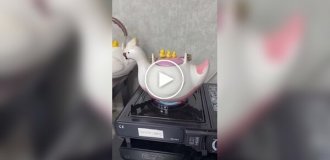I'm telling you about the design of Soviet resistors MLT-2 (9 photos)
Hello everyone! Today, I’d like to talk to you about Soviet electronic components. Specifically, we’ll discuss MLT-2 resistors.
Appearance of four MLT-2 resistors of different ratings
As you all know, resistors are essential in electrical circuits for solving various tasks: current limitation, energy dissipation, and more. Their main characteristics are their resistance value and the power they are rated for.
MLT-2 resistors are a classic example of Soviet resistors, found in almost any technology of that time. The abbreviation MLT stands for Metal-Film, Lacquered, Heat-Resistant. The "2" indicates the resistor’s power rating in watts, meaning the MLT-2 is rated for 2 watts. The body of the resistor is also marked with its resistance value.
MLT-2 resistor rated at 33 kΩ (2W)
The marking on the resistor in the photo is interpreted as follows:
A metal-film, lacquered, heat-resistant resistor rated at 33 kΩ and capable of dissipating up to 2 watts of power.
Let’s dive into the construction of this resistor. A general view of its structure is shown below.
Construction of the MLT-2 resistor
The entire resistor is coated with a lacquer paint layer that has insulating properties. It is typically reddish-brown in color.
This hardworking resistor has literally been "fried" on the job
Note: If the resistor operates for an extended period under high heat, this coating may change color.
Scraped off the coating and exposed the copper nickel-plated cups
If you scrape off the lacquer with a sharp object, it easily comes off, revealing the underlying parts. On the sides of the resistor, there are copper cups with nickel plating, to which tinned copper leads are soldered.
If you scrape deeply into the nickel-plated coating, you’ll eventually expose the copper in the cups.
Depending on the production year, these leads may have silver plating. Collecting them to extract silver is not practical because the silver content in one MLT-2 resistor is only about 0.006 g. However, this is important for responsible personnel managing old equipment containing these resistors, as they may need to be extracted or handed over to a specialized organization during decommissioning.
Exposing the conductive resistive film
If you continue scraping the body of the resistor, you’ll see that a ceramic tube is clamped between two copper cups. This tube is coated with a resistive film, which determines the resistor’s resistance value.
If you split the resistor in half, you’ll see that most of its volume is ceramic, while the resistive film is extremely thin.
That’s all for today about MLT-2 resistors. If you have any questions, feel free to ask, and I’ll be happy to answer them!
































